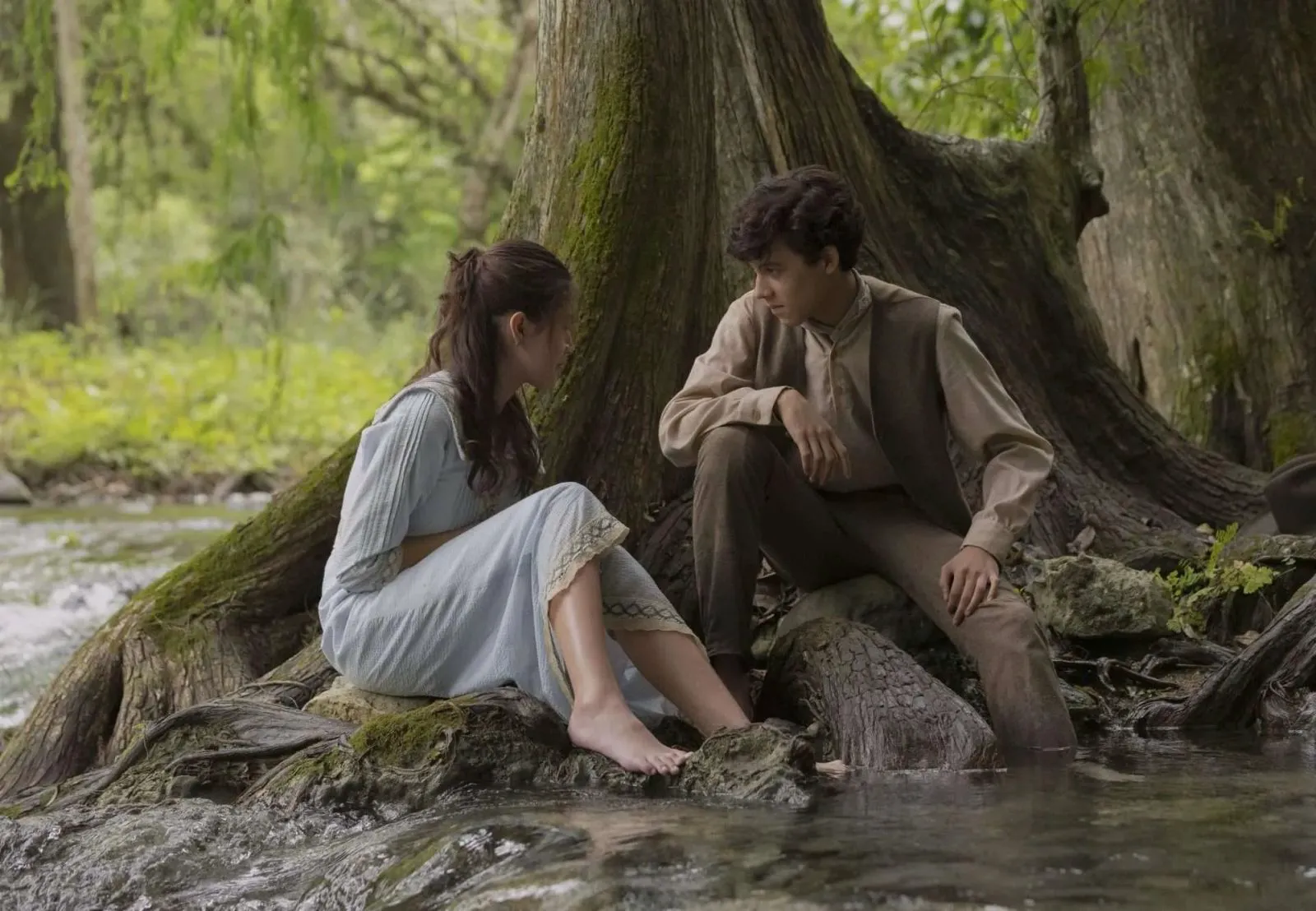Echoes of Comala: A Journey Through Memory and Myth in “Pedro Páramo”
In the wake of his mother’s death, Juan Preciado (Tenoch Huerta) embarks on a poignant quest to Comala, a town steeped in desolation, in search of his elusive father, Pedro Páramo (Manuel Rulfo). Instead of a bustling community, he finds himself amidst a spectral landscape, populated only by ghosts who whisper fragmented tales of the past. These ethereal figures speak of Pedro Páramo, a man long deceased, yet vividly remembered as a powerful and ruthless figure who once held sway over Comala. A wealthy landowner, Páramo’s ambition knew no bounds, and he was willing to commit any act to maintain his dominion. He reveled in his power, fathering countless children and leaving a trail of broken hearts in his wake. Yet, amidst his vast wealth and influence, happiness remained elusive, especially as his beloved Susana (Ilse Salas) succumbed to madness, slowly fading away before his eyes.

Manuel Rulfo as Pedro Páramo
The Legacy of Juan Rulfo’s Masterpiece
“Pedro Páramo” stands as the sole novel by the acclaimed Mexican writer Juan Rulfo. First published in 1955, it is celebrated as a seminal work of magical realism, influencing generations of Latin American authors. Gabriel García Márquez, the author of “One Hundred Years of Solitude,” acknowledged that he might never have written his masterpiece had he not encountered “Pedro Páramo.” This surreal novel left an indelible mark on literary giants such as Jorge Luis Borges and Carlos Fuentes, shaping the landscape of 20th-century Latin American literature. The novel has been adapted for the screen several times, with the most notable adaptation being Carlos Velo’s 1967 film, which competed at the Cannes Film Festival.
Rodrigo Prieto’s Vision: A New Adaptation
Now, Rodrigo Prieto, a renowned cinematographer known for his collaborations with Martin Scorsese, Ang Lee, and Alejandro González Iñárritu, brings his unique vision to “Pedro Páramo” in his directorial debut. Prieto, a four-time Oscar nominee, premiered his adaptation at the Toronto International Film Festival. The screenplay is penned by Mateo Gil, a long-time collaborator of Alejandro Amenábar (“Thesis,” “Open Your Eyes,” “The Sea Inside”).

Still from “Pedro Páramo”
A Dual Narrative: Past and Present Entwined
“Pedro Páramo” unfolds through two distinct narrative threads. In the present, Juan arrives in the ghost town of Comala and interacts with its spectral inhabitants. Through their fragmented stories, a piecemeal biography of Pedro Páramo emerges. Juan encounters figures who initially appear alive but then vanish, disintegrate, or transform into grotesque forms. These surreal encounters dominate Juan’s wanderings through Comala, suggesting that he himself may be among the dead, unaware of his own fate. In contrast, the past is depicted with stark realism, tracing Pedro Páramo’s life from childhood to old age. This segment of the film evolves into a sprawling crime saga set against the backdrop of sun-baked Mexico. Local residents pay homage to the wealthy landowner, much like supplicants before Vito Corleone, and no one dares defy Páramo as he presides over his vast ranch.

Still from “Pedro Páramo”
Unmasking the Myth: The Reality of Pedro Páramo
Initially, Juan and the ghosts seem intent on creating a mysterious, almost mythical image of Páramo. However, when we see the man in the flesh, the mystique dissipates. He is revealed as a common oppressor who exploits peasants, abuses women, and controls vast swathes of land. There is nothing particularly remarkable or intriguing about Pedro’s life. While the film captures the scope of a story spanning decades of Mexican history, it struggles to coalesce into a cohesive whole.
Lost in Translation: The Film’s Shortcomings
While Prieto’s film appears to faithfully adapt the original novel, it loses the book’s enchanting language. The magical and realistic elements are distinctly separated rather than seamlessly interwoven. The polyphony of voices that literature so readily conveys is absent in this adaptation. The filmmakers fail to find an innovative way to translate the novel’s layered text to the screen, resulting in a conventional, monotonous, and predictable film.
A Promising Start, An Unfulfilled Vision
“Pedro Páramo” is unlikely to be hailed as a breakthrough of the year. The film boasts captivating moments and inventive camera angles, befitting the directorial debut of a distinguished cinematographer. However, the filmmakers seem unable to realize their ambitious vision fully. While this new adaptation may spark renewed interest in the novel, the film itself feels disjointed and confusing. It is best viewed after familiarizing oneself with at least a synopsis of the book, lest the narrative dissolve into a series of disconnected scenes.